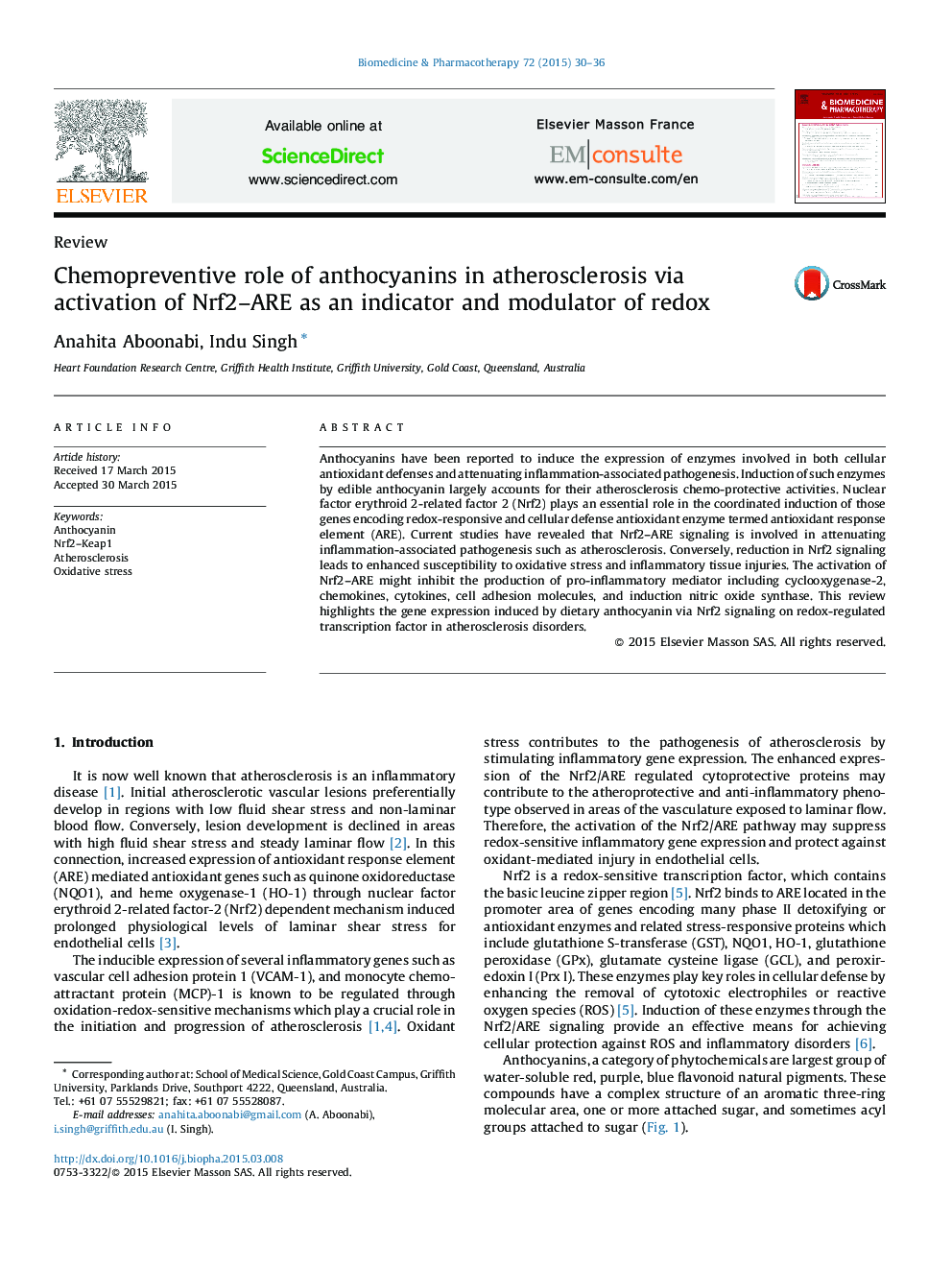| Article ID | Journal | Published Year | Pages | File Type |
|---|---|---|---|---|
| 2523942 | Biomedicine & Pharmacotherapy | 2015 | 7 Pages |
•RAS contributes to pathogenesis of atherosclerosis by stimulating inflammatory gene expression.•Anthocyanins provides inexpensive accessible applicable approach to control atherosclerosis.•Nrf2 upregulates antioxidative and cytoprotective enzymes by reducing proinflammatory mediators.•Nrf2/ARE suppresses inflammatory gene expression, protect oxidant injury in endothelial cells.•Anthocyanins protect human endothelial cells via the activation of Nrf2.
Anthocyanins have been reported to induce the expression of enzymes involved in both cellular antioxidant defenses and attenuating inflammation-associated pathogenesis. Induction of such enzymes by edible anthocyanin largely accounts for their atherosclerosis chemo-protective activities. Nuclear factor erythroid 2-related factor 2 (Nrf2) plays an essential role in the coordinated induction of those genes encoding redox-responsive and cellular defense antioxidant enzyme termed antioxidant response element (ARE). Current studies have revealed that Nrf2–ARE signaling is involved in attenuating inflammation-associated pathogenesis such as atherosclerosis. Conversely, reduction in Nrf2 signaling leads to enhanced susceptibility to oxidative stress and inflammatory tissue injuries. The activation of Nrf2–ARE might inhibit the production of pro-inflammatory mediator including cyclooxygenase-2, chemokines, cytokines, cell adhesion molecules, and induction nitric oxide synthase. This review highlights the gene expression induced by dietary anthocyanin via Nrf2 signaling on redox-regulated transcription factor in atherosclerosis disorders.
